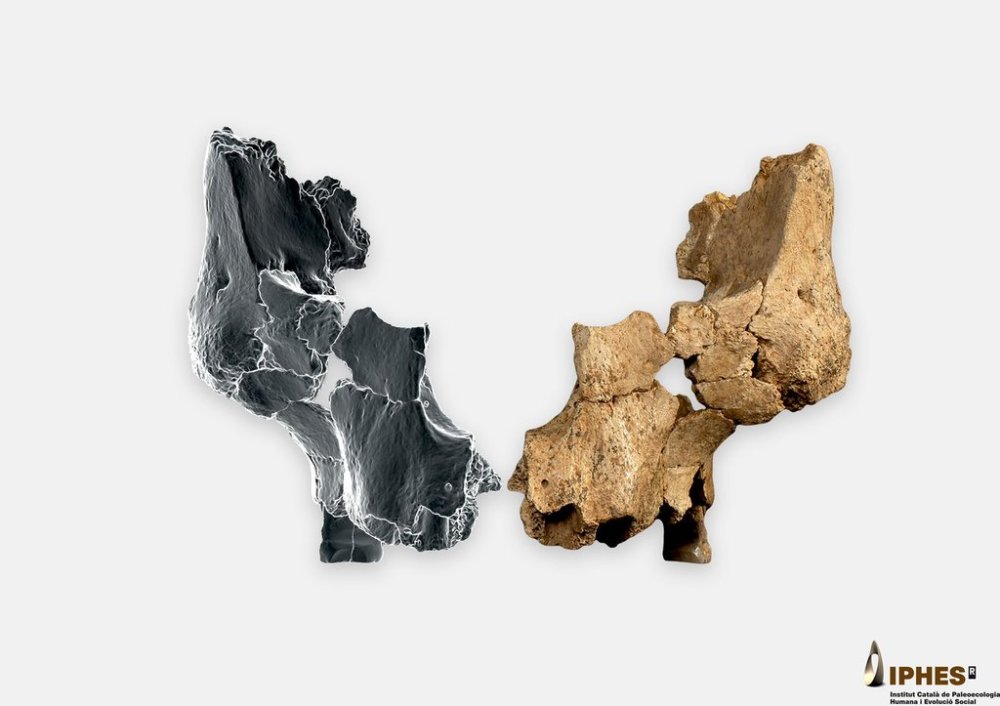Archaeologists uncover the oldest known partial face fossil of a human ancestor in western Europe
Advertisement
Read this article for free:
or
Already have an account? Log in here »
To continue reading, please subscribe:
Monthly Digital Subscription
$0 for the first 4 weeks*
- Enjoy unlimited reading on winnipegfreepress.com
- Read the E-Edition, our digital replica newspaper
- Access News Break, our award-winning app
- Play interactive puzzles
*No charge for 4 weeks then price increases to the regular rate of $19.95 plus GST every four weeks. Offer available to new and qualified returning subscribers only. Cancel any time.
Monthly Digital Subscription
$4.99/week*
- Enjoy unlimited reading on winnipegfreepress.com
- Read the E-Edition, our digital replica newspaper
- Access News Break, our award-winning app
- Play interactive puzzles
*Billed as $19.95 plus GST every four weeks. Cancel any time.
To continue reading, please subscribe:
Add Free Press access to your Brandon Sun subscription for only an additional
$1 for the first 4 weeks*
*Your next subscription payment will increase by $1.00 and you will be charged $16.99 plus GST for four weeks. After four weeks, your payment will increase to $23.99 plus GST every four weeks.
Read unlimited articles for free today:
or
Already have an account? Log in here »
Hey there, time traveller!
This article was published 12/03/2025 (304 days ago), so information in it may no longer be current.
WASHINGTON (AP) — A fossil of a partial face from a human ancestor is the oldest in western Europe, archaeologists reported Wednesday.
The incomplete skull — a section of the left cheek bone and upper jaw – was found in northern Spain in 2022. The fossil is between 1.1 million and 1.4 million years old, according to research published in the journal Nature.
“The fossil is exciting,” said Eric Delson, a paleontologist at the American Museum of Natural History, who was not involved in the study. “It’s the first time we have significant remains older than 1 million years old in western Europe.”

A collection of older fossils from early human ancestors was previously found in Georgia, near the crossroads of eastern Europe and Asia. Those are estimated to be 1.8 million years old.
The Spanish fossil is the first evidence that clearly shows human ancestors “were taking excursions into Europe” at that time, said Rick Potts, director of the Smithsonian’s Human Origins Program.
But there is not yet evidence that the earliest arrivals persisted there long, he said. “They may get to a new location and then die out,” said Potts, who had no role in the study.
The partial skull bears many similarities to Homo erectus, but there are also some anatomical differences, said study co-author Rosa Huguet, an archaeologist at the Catalan Institute of Human Paleoecology and Social Evolution in Tarragona, Spain.
Homo erectus arose around 2 million years ago and moved from Africa to regions of Asia and Europe, with the last individuals dying out around 100,000 years ago, said Potts.
It can be challenging to identify which group of early humans a fossil find belongs to if there’s only a single fragment versus many bones that show a range of features, said University of Zurich paleoanthropologist Christoph Zollikofer, who was not involved in the study.
The same cave complex in Spain’s Atapuerca Mountains where the new fossil was found also previously yielded other significant clues to the ancient human past. Researchers working in the region have also found more recent fossils from Neanderthals and early Homo sapiens.
___
The Associated Press Health and Science Department receives support from the Howard Hughes Medical Institute’s Science and Educational Media Group and the Robert Wood Johnson Foundation. The AP is solely responsible for all content.

